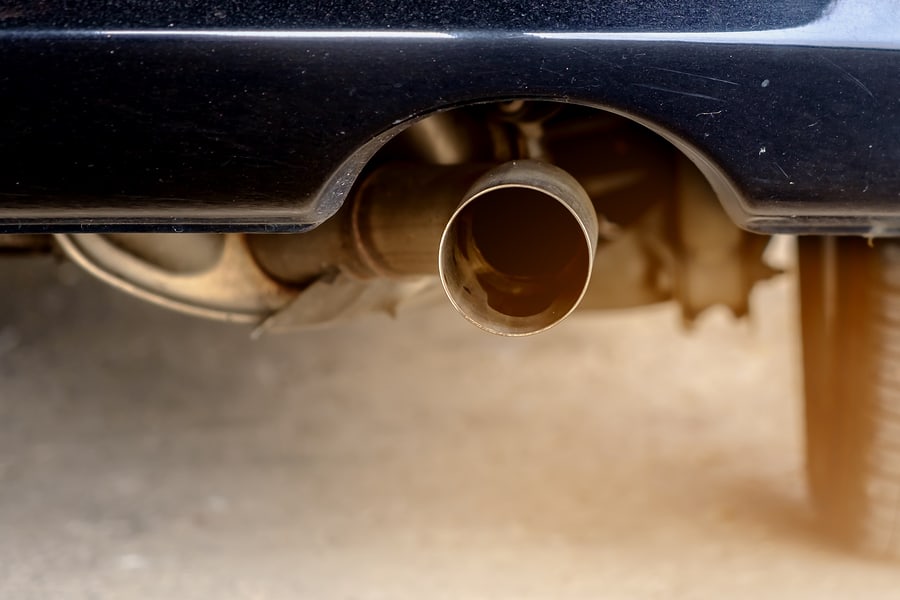Ostrich. That’s what I can be when it comes to anything mechanical. Planes, trains and automobiles are amazing, as long as they work. Lately, I’ve had a boat engine not start, my Vespa not engaging into gear and the brakes on my son’s bike falling off. I need to do better. I need to understand maintenance on a much higher level – or at the very least be diligent about getting my vehicles serviced regularly.
While driving cars is an exciting aspect of my job, it gives me little ammunition for evaluating older vehicles. I know embarrassingly little about maintenance or what to check for throughout various automotive systems. Should you run the A/C every so often? How soon should you check the oil? Or top up antifreeze or when replace wiper blades? The last thing you want is to be away from home with a problem – especially an unseen issue involving carbon monoxide, nitrogen oxide, or nitrogen monoxide. These are the 3 vehicle emissions that are removed by the emissions system, and when it’s not working, prospects are terrifying for both you and the environment. I’ve put together an exhaust 101 cheat sheet!
The Leaking Exhaust System
The least scary part of exhaust issues is that when you have a problem, your fuel economy and vehicle performance will decrease. Scary for the budget, but not your health. The terrifying ramification is that if your vehicle is indoors as the engine idles, carbon monoxide can enter the cabin and cause serious health issues.
My Seals are Great – How Does Carbon Monoxide get into my Car?
The ‘quiet cabin’ on newer automobiles is becoming better and better over time, but there are still ways that air and exhaust from under the car can make its way into your airspace. Damaged rubber door seals, rust under the floor mats, or gaps in the trunk area can all allow engine fumes to creep in, make sure the grommet holes in the trunk are fully secure.
 How the Exhaust System Gets Damaged
How the Exhaust System Gets Damaged
I remember my Dad being a huge fan of anti-rust paints when I was a little girl. I just thought it was because rust was ugly, but apparently, he knew better. Rust and water build-up can cause cracks and holes. On a bicycle, it may not be as much of an issue, but on your exhaust system it can be debilitating. Damage can also be caused by broken or missing bolt in spring fasteners that cause gaps between the exhaust system and the exhaust manifold.
You may think that because the cabin of your car is quiet, there is no damage. Corrosion can trigger pinholes in hidden places, and you have an emissions issue that will only get worse. Even if the pipes and muffler are in good shape, (we know you polish them regularly!!) the connections between components can rust or come loose from driving on rough roads. Because who doesn’t love a little bit of off-roading? Gaskets can wear out and leaks can also occur under the hood, where the exhaust manifold attaches to the engine at the upstream portion of the exhaust system.
These are things that I wish people told you when you purchase a car. Some of us didn’t learn these things in childhood and a maintenance checklist would be so nice!
How Often Should You Check Your Exhaust System?
As a general rule, exhaust systems should be inspected every 6 months for leaks, damage, and broken supports or hangers. Also if you are headed out on a road trip. Anytime there is an unusual noise, get it inspected right away. Make it part of your routine, when having your seasonal tire switchover and/or oil change done, get your exhaust system inspected.
After a recent experience with my vehicle, I would strongly recommend checking your vehicle if there is any kind of noise. Seriously.
Signs of a Possible Exhaust Leak
Once again – the noise thing is the first tip. Rattles, thumping and rumbling during rapid acceleration are big warning signs that you should book an appointment. Likewise, if your gas pedal vibrates while driving, or at any time smell exhaust fumes inside your vehicle, have it inspected immediately.
DO NOT DRIVE THE CAR. Have it towed.
How will my Exhaust System be Inspected?
The exhaust manifold all the way to the end of the tailpipe will be given a once-over by the technician. He or she will check for rust, leaks, broken components and unusual noises. A back pressure test may also be required to determine if there are any blockages or restrictions within the exhaust system. A final inspection will then be completed to ensure that your system is working correctly.
If you are even cooler than I am and have modified your vehicle, have it inspected by a qualified technician to determine any defects. I want a vehicle painted like Lightning McQueen, but that’s not really what I’m talking about in terms of modifications. Just the kind that affects your emissions system and could get you a role in the Grease movie.
How you can Prevent Getting Poisoned by Carbon Monoxide
Number one is to get your carbon monoxide checked when you do your seasonal tire changeover. Schedule it six months ahead, just like going to the dentist. The next one is a great trick. When your vehicle is stopped in traffic, waiting for a train or at a red light, leave extra space between you and the car in front, this will help the fumes dissipate before it gets to your car. You can also switch from external air circulation to inside air circulation. This cuts off the outside air entering your vehicle. That’s what that little button is for that has arrows going in a circle versus just one way. In case you skipped the manual cram. Lastly, always make sure that your exhaust tailpipe is not obstructed. For example, if you have backed into a snow bank and the tailpipe is covered with snow, the fumes will then stay close to the vehicle and not flow away.
Does Carbon Monoxide Detector exist for Vehicle Cabins?
Many portable carbon monoxide detectors are on the market for your car, truck or RV. However; they should not replace your due diligence to have your exhaust system inspected. Preventive maintenance will always be the best way to keep your vehicle safe for you and your passengers.
So there you have it. Let’s review…… 6 MONTHS. Like clockwork. Get the exhaust checked!


